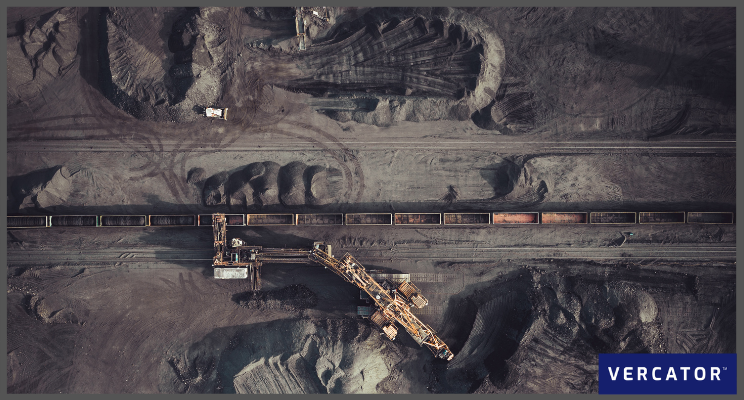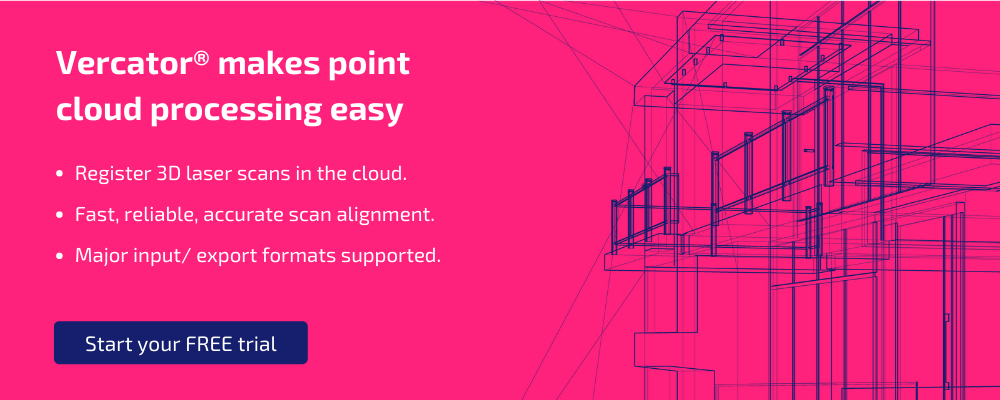The Future of Innovation in the Mining Industry

The latest mining technology trends show a compelling industry shift towards focusing on efficiency, cost savings and safety, while some big mining companies are also embracing sustainability. Digital technology is starting to deliver modern, safer, and more productive mines.
Mining is undergoing this exciting shift thanks to improved data capture processes and innovative use of the data captured. Reality capture data is becoming more comprehensive, more available and more precise, relying on new sources of complex data, like LiDAR and SLAM scanners, Internet of Things (IoT) sensors, automation and real-time monitoring.
Along with the vast growth of real-time data comes the need to consolidate and deploy advanced analytics to capture, collate and find new patterns and trends. By implementing cloud-based registration and analysis software, decisions are now being fed back into more automated processes, and machine learning algorithms ensure each iteration improves on the last. Greater latency of information enables faster decision making; vital when risk management is involved.
While technical advances are crucial, innovation in mining will also come from:
- Better organisation and collaboration.
- Automation, agility, and speed.
- Focusing on game-changing outcomes.
Let's look at some of those in more detail.
The impact of BIM
BIM (Building Information Modelling) emerged from the construction industry and is now finding applications in a wide range of projects – including mining.
BIM fundamentally is the digital representation of the physical and functional characteristics of a project. It is built around creating intelligent 3D models and allows coordination, document management, and simulation during the complete project lifecycle (plan, design, build, operation and maintenance). BIM provides the foundation to take advantage of the promises of automation and speed from key innovative trends underground, on the ground, in the air and the cloud.
Irrespective of its origins, BIM promises to bring tangible benefits to mining operations, particularly in improving efficiency and lowering operating costs. Using BIM and adopting digital technology also leads to a more collaborative approach based on a single-source-of-truth.
The real value of BIM is realised when data is shared, and 3D registration and modelling software is incorporated within a BIM workflow. This centralising of data creates a reliable, accurate, real-time digital replica (known as a digital twin).
When correctly maintained and updated, a digital twin of a mine can:
- Enhance collaborative working.
- Democratise access to important data.
- Deliver visual, technical, and performance data throughout the whole lifecycle.
Keeping such a model up-to-date is known as scan-to-BIM. Enabled by faster scanning and reality capture software, scan-to-BIM enables the digital twin central model to be created, updated and maintained quickly and efficiently. It constantly feeds back accurate, visual data from the site to allow progress to be checked and quality to be maintained or improved.
Suggested reading: To learn more about digital twins, take a look at our blog — How to make a digital twin: the options, types and outputs
The application of drones and robotics
Mining, like other industries, is on the cusp of a robotics boom, and we're already seeing autonomous haulage and driving in mining environments. As a result of the pandemic, we're also seeing robotics and automation solutions being deployed to address issues such as people shortages and risk management.
In these use cases, robotics and drones deliver:
- Improved health and safety.
- Detailed insights into conditions to protect machinery and people.
- Increased access to hazardous areas.
- Faster, higher-quality visual data — with SLAM robots for inaccessible areas and drones for large area scanning.
- Unlimited aerial data that allows engineers to focus on analysis and interpretation of results rather than data capture.
Improving outcomes
Taking these advances and creating real success stories and subsequent positive outcomes will be pivotal in the mining industry moving forward. It’s best not to follow the latest tech trends slavishly, but to build a technology roadmap and a solid investment plan based on the expected results. Keeping a sharp focus on what you want to achieve will help decide where your best investment area will be.
From the design stage through to the inspection stage and beyond, software-driven 3D scanning and registration solutions are an integral element in mining innovation — with augmented reality (AR) and virtual reality (VR) applications also starting to emerge.
Innovation and the increasing capabilities of technology, underpinned by advancements in reality capture, has the potential to improve outcomes in a number of areas within the mining industry.
Sustainability
Mining needs to begin moving towards a more sustainable model in order to protect its own future and legacy, and to protect the environment for future generations.
- Making mining more green: New Lithium mines in the UK deploy new technologies to aid exploration and extraction, especially of deposits in remote locations.
- Using electric vehicles: We are already seeing companies like BHP, Rio Tinto, and FMG increasing the electrification of their lighter vehicles.
Regenerating older mines and quarries: It is estimated that there might be enough energy generated from the UK's flooded, underground abandoned mines to heat all homes near the old coalfields.
Productivity and cost savings
Increasing business efficiency and profitability should be at the heart of any operation, and technological innovation is well placed to make these a reality within mining.
- Getting in early: Innovative capabilities are moving across into exploration, including the ability to scan and identify the best place to deploy sensors in the field, collect samples, and analyse those samples.
- Using algorithms to improve repeated tasks: Replicating truck operators hauling routes in the digital twin and then using algorithms to optimise those routes can save time, money and resources.
Safety
With the help of technology, providing a safe and secure environment for workers in the mining industry has never been more achievable.
- Drones replacing humans for inspections: BHP's vice president of marketing has previously stated that drones can cut inspection times by 75% — driving efficiency without putting employees in danger.
- VR and AR-powered training solutions: Training and familiarity are crucial to safety. Using VR/AR can get miners up to speed on the latest best practices, technologies, and processes while providing an almost real-world experience far from the actual site.
- Remote working: Businesses can also deploy AR and VR-powered digital twins as part of their working environment. This can enable several mining jobs to be transformed into safer remote roles.
The mining industry is heading towards a future driven by reality capture software where it will be possible to virtually construct and deconstruct buildings, plants, mines, and all associated infrastructure before even breaking ground.
Software is central to future innovation
The mining industry can benefit enormously from innovation by using reality capture effectively. The future will likely see a blurring of lines between software in the cloud and hardware on (or under) the ground. With greater interoperability, BIM platforms will receive inputs from a broader range of data sources and types to create a more detailed picture — or a complete digital twin.
At Vercator, our goal is to change how the mining industry works with reality capture data. Realistically, this comes back to a cloud-first software approach. Your ability to invest in future-proofed software will help you capitalise and exploit new trends without continually changing workflows to cope.
We will continue to embrace the cloud and harness its power, speeding up the production of meaningful insights for the mining industry while revolutionising how mining clients will innovate and work with their data.
Additional reading: If you’re interested in how the cloud can transform reality workflows, check out our eBook — Are You Ready For the Cloud?
Tags: bim, Robotics, cloud-based processing, mining


